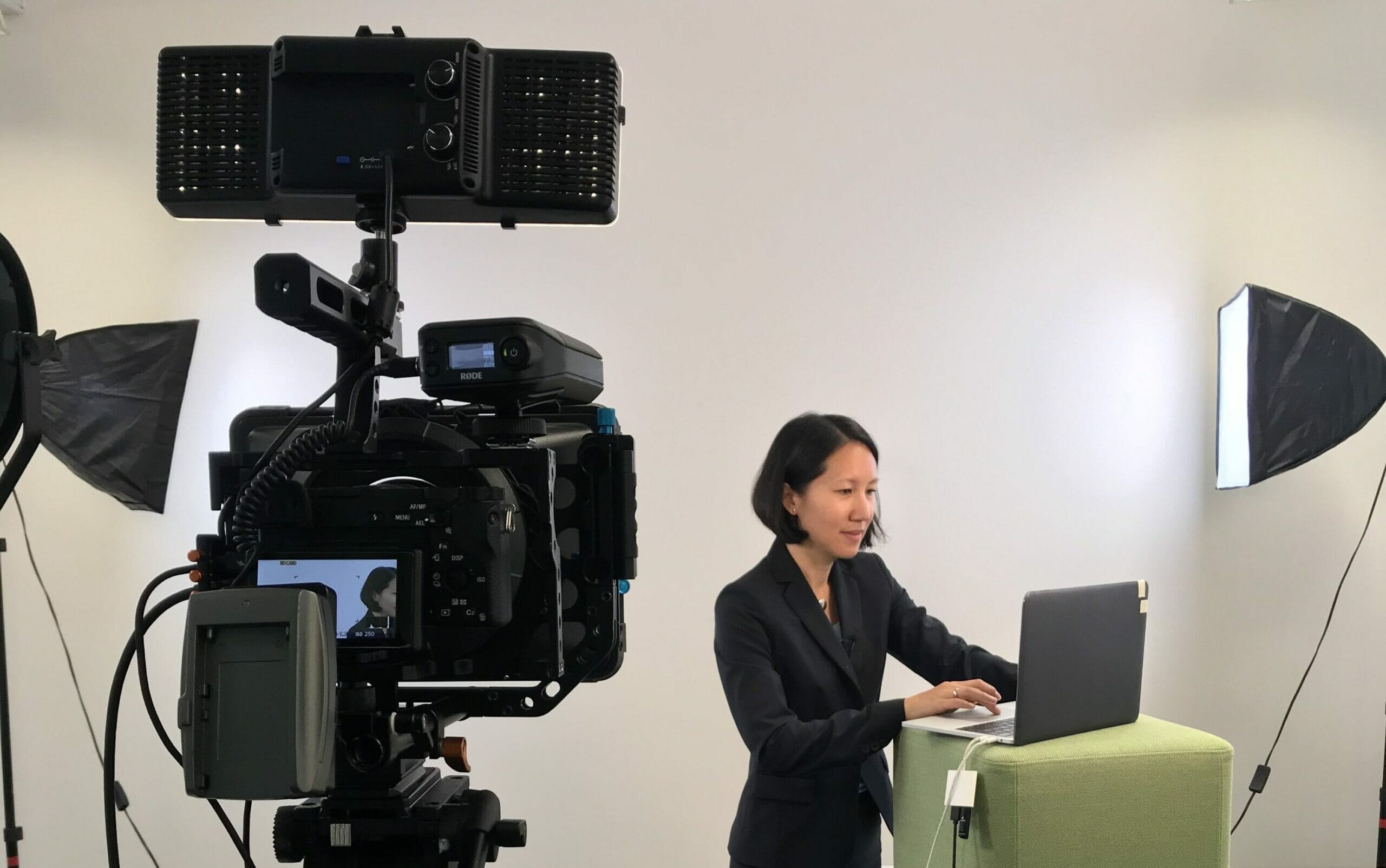To start, we returned to the basics of course design. Our lecturers did a fantastic job reviewing their course content to determine what should be filmed. They then organised their live sessions around the new video material. Once production started, it was impressive to see how quickly our lecturers became comfortable speaking to the camera. Credit is due for their preparation and adaptability. Some lecture recordings were short, less than 5 minutes in length. Others were around 30 minutes. It depended greatly on the examples and concepts each lecturer thought was best to provide the students in video format. The turnaround time for completing each course was fast. In most cases, the content for an entire course was filmed in a day. We filmed 2-3 courses on back-to-back days. Then the material was edited, approved, exported and uploaded for students to watch within a few days after that.
Production-wise, there were initial considerations around set design, lighting and camera placement. We went with a uniform white background and brightly lit aesthetic. Lecturers spoke to the camera and a uniform composition from the waist up was used. We filmed with two camera angles. The idea was to give viewers lecture displayed four ways: Camera 1, Camera 2, PowerPoint slide, and picture-in-picture where Camera 1 is overlaid on a PowerPoint slide. Additionally, for one lecture, an Excel model being worked on was filmed.
Based on the experience of creating 100 videos, we already have new ideas for how to continue evolving the remote learning experience. Perhaps in the future we will have more elaborate, lecturer-specific set designs. Maybe we will shoot some lectures on location, if helps to visually illustrate a certain topic, concept or case better. Another idea is to build on our Excel sheet example, creating more content where calculations are shown in real time. We are actively reviewing best practices from documentary filmmaking, news and vlogging, among other types of informational video content. We are also considering how content is being digitised at other education providers, both inside and outside business education.
The next step is to get feedback from our current MBAs and the lecturers. We are in the middle of an iterative learning process. We don’t consider our video lectures merely as a short-term response to the pandemic. Instead, this content is leading our programme permanently into a new era of MBA education. We expect video to be increasingly woven into course design across the industry. We expect applicants to start evaluating and comparing MBA programmes based on the quality of their digital content production, as well as the supporting infrastructure for digital communication. Never before have prospective students had the ability to preview lecturers and course content at this scale. Likewise, corporate recruiters can gain a greater understanding of the management skills our programme develops. This is a big opportunity to reinforce confidence amongst all stakeholders in our ability to provide an excellent educational experience.
About the author(s)
Newsletter
Get the latest articles directly to your inbox.
Share article
More articles
The Future of Work and the Central Role of Diversity & Inclusion
Leadership in Transition: Five Trends of Modern Leadership
The future of work – also relevant for the legal market?
Why inclusive leadership matters for every generation
Do young lawyers need leadership, too? Classification according to generations – slightly arbitrary, but useful


